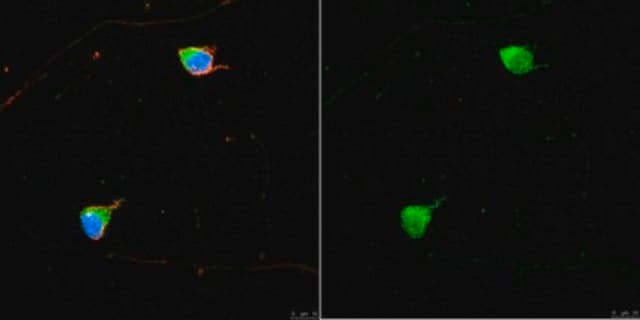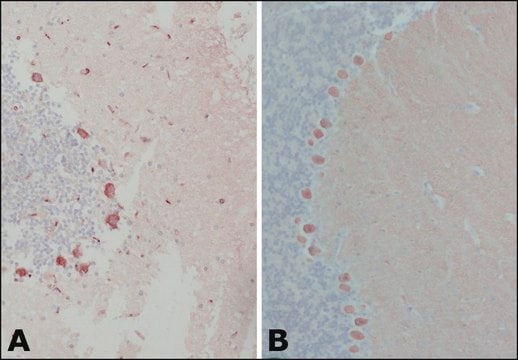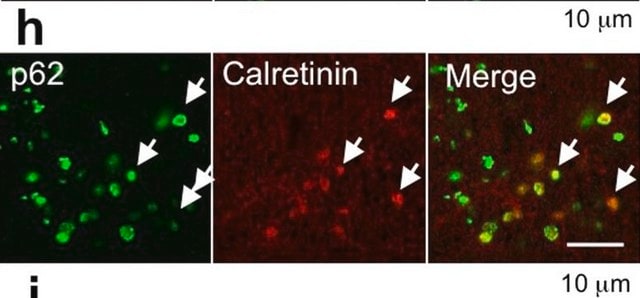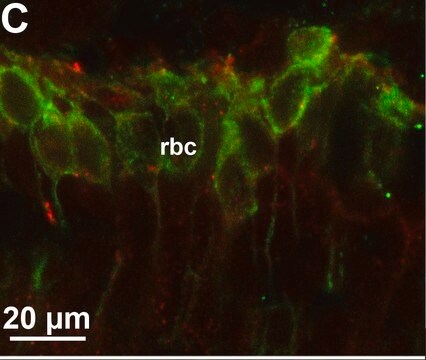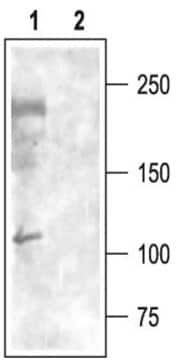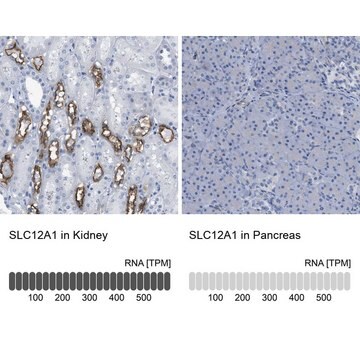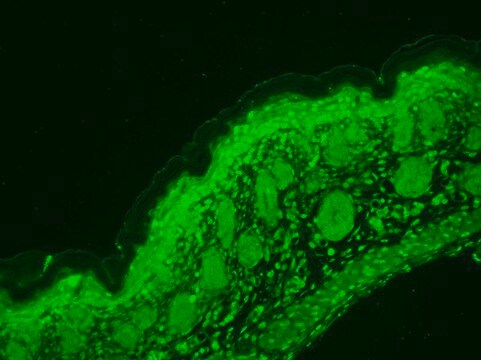C9848
Monoclonal Anti-Calbindin-D-28K antibody produced in mouse

clone CB-955, ascites fluid
Sinonimo/i:
Calbindin Antibody, Calbindin Antibody - Monoclonal Anti-Calbindin-D-28K antibody produced in mouse
About This Item
Prodotti consigliati
Origine biologica
mouse
Livello qualitativo
Coniugato
unconjugated
Forma dell’anticorpo
ascites fluid
Tipo di anticorpo
primary antibodies
Clone
CB-955, monoclonal
PM
antigen 28 kDa
contiene
15 mM sodium azide
Reattività contro le specie
mouse, human, guinea pig, canine, sheep, rat, pig, rabbit, feline, bovine, goat
Convalida avanzata
independent
Learn more about Antibody Enhanced Validation
Concentrazione
15-55 mg/mL
tecniche
immunohistochemistry (formalin-fixed, paraffin-embedded sections): 1:3,000 using rat cerebellum sections
indirect ELISA: suitable
western blot: 1:3,000 using MDBK cell extract
Isotipo
IgG1
N° accesso UniProt
Condizioni di spedizione
dry ice
Temperatura di conservazione
−20°C
modifica post-traduzionali bersaglio
unmodified
Informazioni sul gene
human ... CALB1(793)
mouse ... Calb1(12307)
rat ... Calb1(83839)
Categorie correlate
Descrizione generale
Monoclonal Anti-Calbindin-D-28K (mouse IgG1 isotype) is derived from the CB-955 hybridoma produced by the fusion of mouse myeloma cells and splenocytes from BALB/c mice immunized with a purified bovine kidney calbindin-D-28K. The isotype is determined by a double diffusion immunoassay using Mouse Monoclonal Antibody Isotyping Reagents, Catalog Number ISO2.
Calbindin-D-28K belongs, together with calmodulin, S-100, parvalbumin, troponin C and other proteins, to a family of low molecular weight calcium-binding proteins (CaBPs). These CaBPs have homologous primary structures, which contain polypeptide folds of the EF-hand type for the acceptance of Ca2+. Calbindin is an attractive neuroanatomical marker. Despite its broad tissue distribution, calbindin-D-28K exhibits a cell-type specific expression pattern. Thus, it has been immunocytochemically localized in selected cells in many CNS structures, where it is thought to act either as an intracellular calcium buffer, or in the intramembranous transport of calcium. It is found predominantly in subpopulations of central and peripheral nervous system neurons, and in certain epithelial cells involved in Ca2+ transport such as distal tubular cells and cortical collecting tubules of the kidney, and in enteric neuroendocrine cells. Monoclonal antibody reacting specifically with calbindin-D-28K is instrumental in the localization of calbindin in different tissues and cell populations.
Specificità
Immunogeno
Applicazioni
Azioni biochim/fisiol
Stato fisico
Stoccaggio e stabilità
Esclusione di responsabilità
Not finding the right product?
Try our Motore di ricerca dei prodotti.
Raccomandato
Codice della classe di stoccaggio
10 - Combustible liquids
Classe di pericolosità dell'acqua (WGK)
WGK 1
Certificati d'analisi (COA)
Cerca il Certificati d'analisi (COA) digitando il numero di lotto/batch corrispondente. I numeri di lotto o di batch sono stampati sull'etichetta dei prodotti dopo la parola ‘Lotto’ o ‘Batch’.
Possiedi già questo prodotto?
I documenti relativi ai prodotti acquistati recentemente sono disponibili nell’Archivio dei documenti.
I clienti hanno visto anche
Il team dei nostri ricercatori vanta grande esperienza in tutte le aree della ricerca quali Life Science, scienza dei materiali, sintesi chimica, cromatografia, discipline analitiche, ecc..
Contatta l'Assistenza Tecnica.

